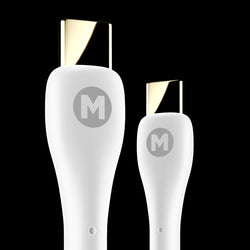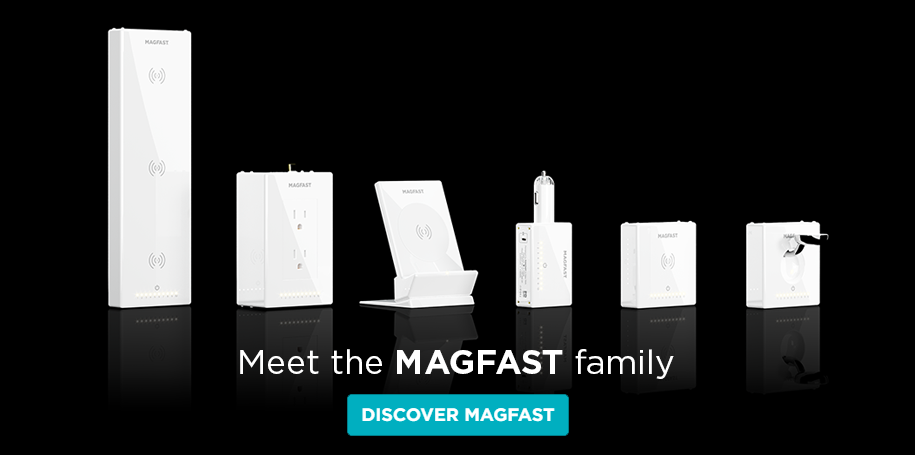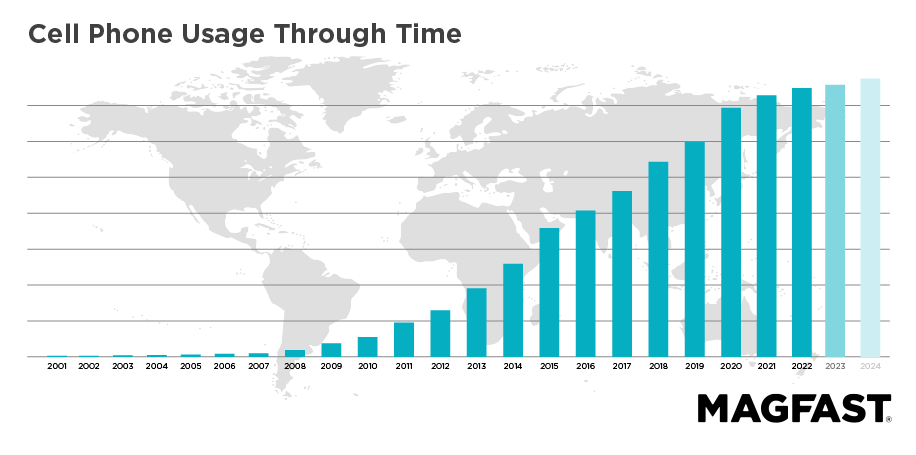
The Most Popular Cell Phones Through Time
The world of cell phones has evolved at a dramatic pace. When the first phone was launched to the consumer market in 1983, few people would have thought that, 40 years on, we would be streaming movies, playing games and completing our shopping via these portable boxes of communication. Today, 6.6 billion people are connected via smartphones, with several million more communicating via more basic cell phones. Experts predict that, by 2027, that number will increase to 7.6 billion. But where did it all begin?
History of the Cell Phone
While mobile car phones had been in production since the 1940s, it wasn’t until 1973 that the first truly mobile phone was demonstrated. Motorola engineer Martin Cooper made a call on the prototype phone while walking the streets of New York – the very first call to be made without the need for wires or cables. It would be another 10 years of Motorola working to overcome a number of technological and regulatory hurdles before this prototype was manufactured commercially.
Motorola was finally able officially to launch the Motorola DynaTAC 8000X in 1983, with ‘TAC’ standing for Total Area Coverage. The phone weighed two pounds, provided just 30 minutes of talk time and took 10 hours to charge. It cost $3,995, equivalent to around $10,400 in today’s money. The phone was generally too weighty and expensive to become hugely widespread; Ameritech (now AT&T) sold around 1,200 handsets in the first year of its availability, which was still higher than anticipated. Even with the bulky design and expensive price tag, it was clear that consumers wanted mobile communication.
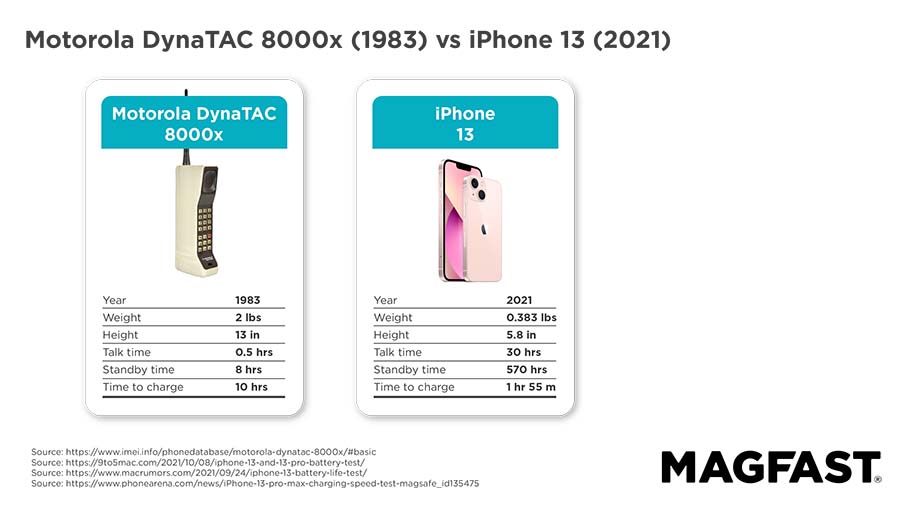
The Motorola DynaTAC was succeeded in 1989 by the Motorola MicroTAC. This was a smaller model, designed to fit in a shirt pocket, with a mouthpiece that flipped up over the keypad. It weighed 12 ounces, was 9 inches long and sold for between $2,495 and $3,495. The phone included a ‘fake’ pull-up antenna as well as a working internal antenna. Focus groups conducted by Motorola found that users expected a cell phone to have an external one, and so it was included to help sales.
These early phones, while technologically prehistoric by today’s standards, set a precedent for mobile innovation and development. They showed consumers the convenience of mobile communication, freeing people from their cables, landlines and desks.
From 1G to 5G – The Generations of Cell Phone
Our handsets are no good as communication devices if the networks aren’t in place to connect us to other people. So far, since the first commercial cell phones, we have seen five different generations of wireless network, all bringing something new to our communication functionality.
1G & 2G – 1970s to 1990s
The first generation, 1G, was launched by Nippon Telegraph and Telephone in 1979 in Tokyo. Five years later, Japan became the first country to have nationwide 1G coverage. 1G was introduced to the USA in 1983, the same year that the first mobile phone became commercially available.
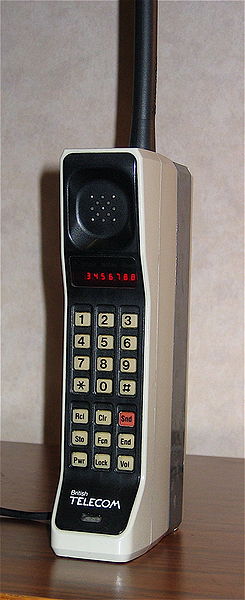
At the time, 1G was groundbreaking – in theory, it would allow everyone who had a mobile phone to connect. However, in reality, coverage was patchy, and users found a lot of static noise over calls, making it difficult to hear whoever was on the end of the line. It was also far from secure. There was no encryption, meaning it was easy for people to eavesdrop on calls via radio scanners. Download speeds were slow over 1G, reaching around 2.4kbps.
Iconic 1G handsets included the Motorola DynaTAC 8000x (1983), the Mitsubishi Roamer (1986), the Motorola 4500x (1986) and the Panasonic C-Series (1987). Mobile phone subscribers in the US increased from 340,000 in 1985 to 5 million in 1990.
The move to the second generation of cell phones brought people together even more than before. Text messaging, payments and the internet all came out of the birth of the 2G network; the cell phone revolution was truly underway.
While 1G was analog, 2G was digital. 2G networks could offer digital encryption for calls, meaning more security for users. It was also able to make more efficient use of the radio frequency spectrum, allowing for more users per frequency band. Sound quality was vastly improved and download speeds increased, reaching around 0.2mbps.
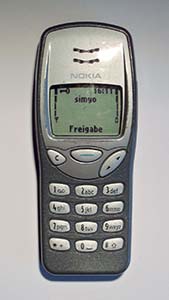
2G was first launched in Finland in 1991, before spreading to other areas of the globe. 1993 saw the first person-to-person text message sent in Finland via 2G, and the first downloadable content – ringtones – became available in 1998. It was also in 1998 that payments could be made on your phone.
With these huge improvements, mobile phones were more widely adopted during the 2G era. ‘Candy bar’ phones became popular, including the iconic Nokia 3210, which launched in 1999 and sold over 160 million units. Even so, the 2G network was incapable of handling complex data like videos, and consumers continued to demand more from their phones.
3G Cell Phones – 2000s
When 3G came into play, the world of cell phone technology really exploded into life. Where phones were popular before, they were now seen as a necessity. With speedy download speeds, app stores and incredible battery life, using a phone was no longer just for messages and phone calls. It was for everything.
3G was first trialled in Japan in 1998. It was widely established in the early 2000s, hitting the US in 2002. With it came international roaming, media streaming and the ability to surf the internet, thanks to download speeds that reached an average of 2Mbps. Conference calls and video calling were now possible and using your phone to send e-mails became the norm.
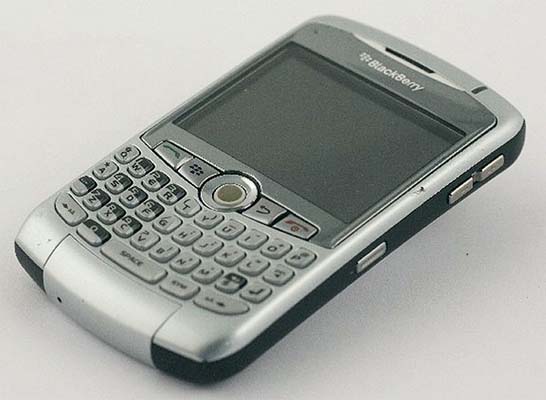
With these increased capabilities, we required more from our handsets. The 3G era saw the beginning of the smartphone boom, with the first iPhone and the Blackberry Curve 8300 both launching in 2007. These early smartphones paved the way for what we have now – the ability to communicate, connect and create, all in the palm of our hand.
4G & 5G Cell Phones – 2010s to Present Day
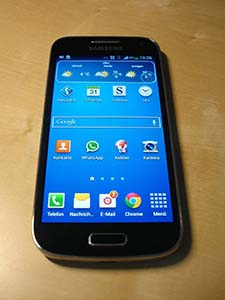
Smartphones began to dominate the mobile phone market. As such, 4G was required to match the demand for these developing apps and services. It was first introduced in Norway and Sweden in 2009 and became the standard service around the world. It had data speeds of 12.5Mbps as a minimum, meaning users could now stream high-quality videos, game online and quickly access the web.
Whereas switching from 2G to 3G only required a new SIM card, upgrading to 4G called for a whole new handset. This allowed phone manufacturers to increase their profits radically and led to Apple’s rise to become the world’s first $trillion company. The best-selling phones during the 4G era were the iPhone 6, selling 22.4 million units worldwide, and the Samsung Galaxy S4, selling an incredible 80 million units worldwide.
Apple with its iOS platform, and Google’s Android system, now dominate the operating systems market, with only a few other brands getting a look in. The latest figures show that, by the end of 2021, Android OS operated on 70% of the smartphone market with the Apple variant supplying 29%.
With 4G now at its capacity for data speeds, the next generation is required. And so, 5G has begun its growth as the next standard.
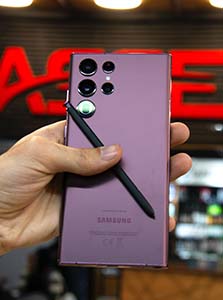
5G was first launched in South Korea in 2019. It’s still being spread worldwide, with many major cities already implementing the network and more areas being added all the time. It’s been claimed that 5G will be 20 times faster than 4G, with users in Canada already seeing a download speed of 169.46Mbps. 5G is also expected to have minimal latency and a larger frequency range, allowing support across more devices. The new network will offer higher levels of security and reliability, opening up its usage into more industries such as medicine, military and agriculture. Apple, Samsung, and many other brands have already produced 5G phones, such as the Samsung Galaxy S22 Ultra and the iPhone 13.
The truth is, we don’t yet know the extent of what 5G can offer us. What we do know is that it could revolutionize the way we live in the same way 1G did back in the 1970s.
Cell Phone Firsts
The First Mass-produced Phone
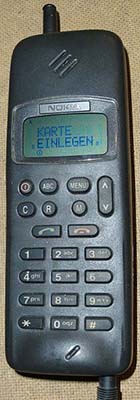
The first mass-produced phone was the Nokia 1011, launched in 1992. It featured a monochrome LCD screen and had a memory large enough to hold 99 contacts, including names and phone numbers. It was a ‘brick’ format, weighing 1 pound and measuring 7.5 inches long, 2.3 inches across and 7.7 inches deep. It used a nickel-cadmium rechargeable battery which offered 90 minutes of talk time or 12 hours of standby operation.
It was Nokia’s first phone to use the new GSM digital cellular frequency, the European standard, so it could be used all across the continent. It was succeeded in 1994 by the Nokia 2110.
The First Smartphone
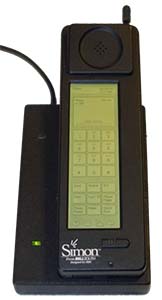
The term ‘smartphone’ wasn’t coined until 1995, but it was retroactively applied to the IBM Simon Personal Communicator due to its features. This phone was first launched in 1994 and was capable of sending and receiving e-mails, faxes and pages. It also had a calendar, address book, calculator, world clock, electronic notepad and appointment scheduler, and featured a monochrome touchscreen with a stylus. It’s now viewed as the world’s first smartphone.
It sold 50,000 units in the US between 1994 and 1995 and it was the first PDA that was also capable of making calls. It cost $900 with a two-year contract, which equates to around $1,755 in today’s money. The battery of the IBM Simon only lasted an hour, and it was eventually made redundant by the increase in slimline flip phones which dominated the market in the 1990s.
The First Flip Phone
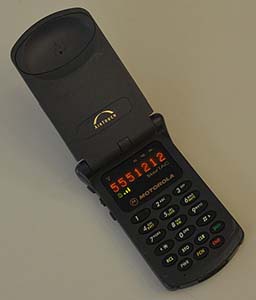
While the Motorola MicroTAC featured a flipped mouthpiece, the first true clamshell flip phone was its successor, the Motorola StarTAC, launched in 1996. It was the smallest and lightest phone available at the time, weighing just 3.9 ounces and measuring 3.8 inches in length. Its size was such a draw that magazine ads included a pullout cardboard copy of the phone to demonstrate just how slimline and sleek this cell phone was. It was originally priced at $1,000, about $1,842 in today’s money.
Early versions were able to receive SMS messages, but only the later versions could also send messages. This was also the first phone to feature a vibrate option instead of a ringtone. The standard NiMH battery offered 75 hours of standby time and 230 minutes of talk time. There was also an option to swap out the battery for a higher capacity lithium-ion battery, which had yet to become the norm amongst cell phones.
The Motorola StarTAC was hugely popular and sold approximately 60 million units worldwide. It was eventually succeeded by the iconic Motorola RAZR in 2003.
First Phone with No External Antenna
The Hagenuk GlobalHandy, launched in 1997, was the first cell phone without an external antenna. It was constructed in an ergonomic style, designed to fit comfortably against the ear and also in the hand. It weighed 4.7 ounces and featured a built-in user guide to help people explore all its many features without needing a separate manual.
At the time, safety around cell phones was a concern, but the Hagenuk GlobalHandy had one of the lowest emission levels of all phones available. However, a downside to this model was that the keypad only featured numbers, not letters – meaning texting required a complicated menu system.
First Phone with a Color Screen
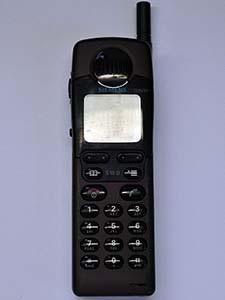
Launched in 1998, the Siemens S10 was the first cell phone to feature a color screen. The 97 x 54-pixel screen compromised of four colors, red, green, and blue, with a white background. While the color screen was a huge marketing draw for Siemens, in reality, it was difficult to read from certain angles and in light that was too bright. The screen could only display text, with just a few symbols – nothing like the intricate graphics supported by our smartphone screens today.
The phone weighed 6.5 ounces and measured 5.79 inches in length. It did provide additional features to the color screen, including a memo function to record 20 seconds of speech, two phone books, and call screening. Sales of the S10 were disappointing, with consumers preferring to use the lighter and more functional competitors on the market.
First Phone with a Camera
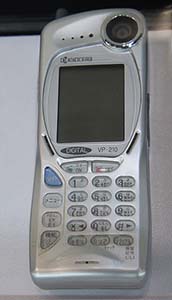
The world’s first camera phone was the Kyocera VP-210, launched in Japan in 1999. It featured a 0.11-megapixel front-facing camera and was only capable of storing 20 images. It could send two photos per second through Japan’s phone network and was also popular for use as a videophone to make video calls. It weighed about 5.5 ounces and retailed for around $325, about $552 in today’s money.
Other less popular camera phones came and went before Sanyo unleashed what Time magazine called one of the most influential gadgets of 2002 – the Sanyo SCP-5300. Boasting a 0.3-megapixel camera and at a cost of $400, it was the first time that cameras on cell phones really hit the mainstream. It featured a dual-color display, a flash for the camera, a self-timer and a digital zoom. It weighed 4.1 ounces, measured 3.7 inches in length and was a clamshell design. As well as having one of the first functional cameras on a phone, it also included a number of other useful capabilities, and had a battery life offering 2.7 hours of talk time and 250 hours on standby.
The Evolution of the Camera Phone
By 2003, camera phones outsold digital cameras for the first time, and the number of megapixels crammed into your photos was hitting full digits. By 2005, Nokia was the world’s most sold camera brand and, by 2006, half the cell phones in the world had a camera installed. In 2010, the number of phones worldwide that had a camera topped 1 billion.
As we snapped through the 2010s, the number of megapixels and lenses were on the increase. Recent camera phones have seen multiple lenses for optimum zoom and focus and higher megapixels, with the Samsung S4 Zoom featuring a 16-megapixel camera and the Nokia Lumia 1020 featuring a huge 41-megapixel camera. Taking high-resolution photos once required expensive and dedicated camera equipment – now, it is just something we’ve come to expect from our phones.
First iPhone
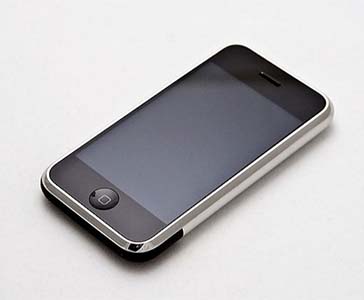
Apple’s first iPhone launched in 2007. Known as the iPhone 2G, or the original iPhone, it cost $499 for the 4GB model or $599 for 8GB, both with a two-year contract. Weighing 4.8 ounces and measuring 4.5 inches, it featured a 3.5-inch touchscreen plus a 2-megapixel camera. The first iPhone offered 8 hours talk time with a 250-hour standby.
The iPhone changed the smartphone game, being more appealing to general consumers than the business-focused Blackberry. It sold 6.1 million units before it was discontinued in 2008 and was the pioneer in accessible, efficient and functional smartphones, elevating the entire industry.
First Android
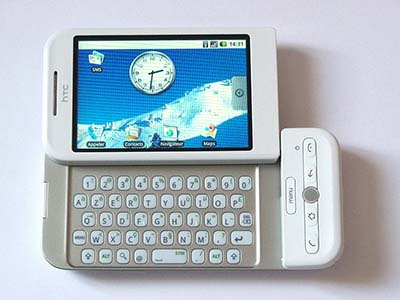
The first Android phone was the HTC Dream, also known as the T-Mobile G1, launched in 2008. It weighed 5.5 ounces and measured 4.63 inches in length with a 3.2-inch touchscreen. It featured a slide-out display with full QWERTY keyboard, 3-megapixel camera and a battery providing six hours of talk time and 406 hours of standby.
While the phone was praised for its robust hardware, it failed to match the sleek design of the contemporary iPhone or Blackberry models. The Android operating system also faced criticism for a lack of functionality compared to other platforms. Even so, it sold one million units in the first year and was discontinued in 2010.
The Top 20 Selling Phones of All Time
The phone market has changed dramatically since the first cell phone became available in the 1980s. The technology available and the features desired by consumers are always changing and developing, which has an effect on which phones have been most popular over the years.
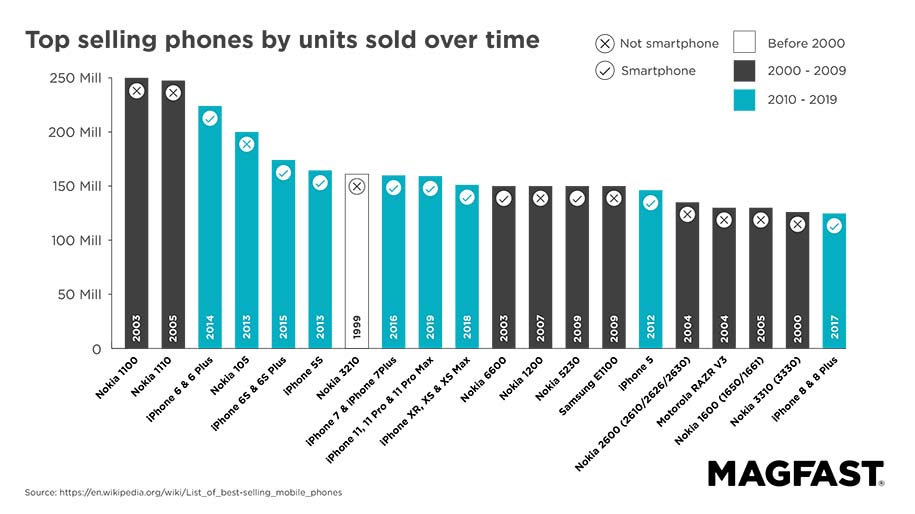
The best-selling phone of all time is the Nokia 1100. Since its launch in 2003, it has sold over 250 million units. While other contemporary models could offer more high-tech features, the Nokia 1100 was intended to be a basic phone targeted at developing countries, where users only needed to call, send SMS text messages and use simple features such as alarms, calculator, flashlight and stopwatch. The keypad was designed to be dust-resistant, and the sides were non-slip for ease of use in humid weather. The basic model could last up to 400 hours in between charges. At the time, it was the cheapest model on the market before it was discontinued in 2009.
The Nokia 1100 was followed by the Nokia 1110, which has sold around 248 million units since its launch in 2005. Another basic model, this phone was aimed at people who were buying a mobile phone for the first time. It featured a black and white display and five hours of talk time, plus it had three games – Pocket Carrom, Dice Games and Snake Xenzia. It also proved popular in developing countries thanks to its reliability and lower price.
The third best-selling phone is the iPhone 6 (including the iPhone 6 Plus), making it the best-selling smartphone of all time. The iPhone 6 series was the eighth generation of Apple’s iPhone. Since it launched in 2014, it has sold over 224 million units worldwide. Within the first 24 hours of availability, the iPhone 6 and 6 Plus had received over 4 million pre-orders, which exceeded the number of units Apple had. 10 million were sold in the first three days of sale. The model received numerous positive reviews, praised for its balance of form and function, as well as its improved battery life, larger screen size and higher resolution camera. However, the iPhone 6 also faced criticisms, most notably ‘bendgate’ where users found that the body of the phone would bend under pressure, especially when carried in a pocket.
Feature Phones vs Smart Phones
The list of top 20 selling phones of all time consists of 50% smartphones and 50% feature phones. This is a testament to the reliability and simplicity of feature phones, with many people still viewing smartphones as being too complex for their needs. Feature phones are also usually cheaper than smartphones, making them a more appealing choice for many phone users.
The Nokia 105 is the only feature phone on the best-sellers list that was released after 2010. It’s the fourth best-selling phone and has sold 200 million units since its launch in 2013. This was another model that was targeted towards developing countries, offering a huge 35 days of standby time, 12.5 hours of talk time, plus handy features like a flashlight and FM radio.
The ongoing popularity of feature phones shows that even in this modern and high-tech world, sometimes simplicity is preferred. However, there is no denying that smartphones have revolutionized how we use technology, how we work and how we get our entertainment.
The Top 10 Smartphones in the World 2021
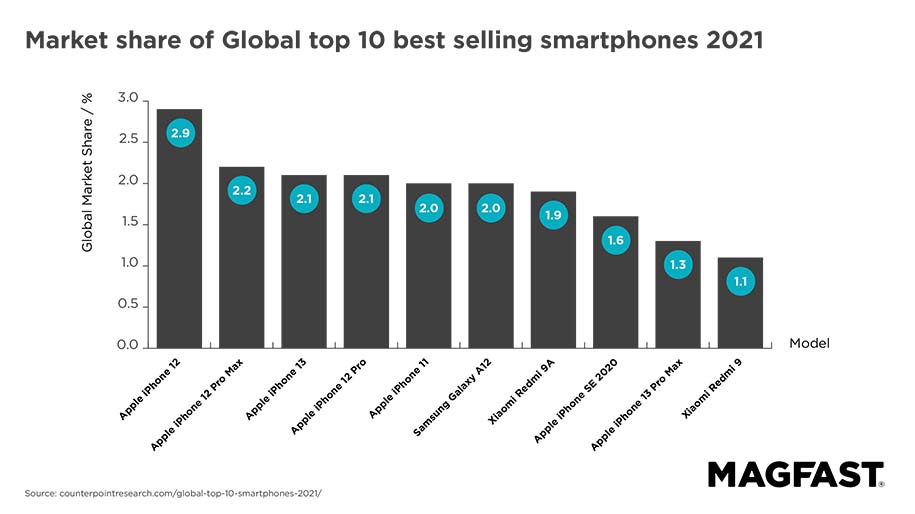
The best-selling phones of 2021 mainly include phones that were released in the previous year – only the iPhone 12 Pro Max, the Apple iPhone 13 and the Apple iPhone 13 Pro Max were released in 2021. While Apple has dominated the best-sellers list of 2021, with seven models in the top 10, it is the older iPhone 12 that sold the most units. This is an interesting reflection on the phone consumer audience. It suggests that, while there will always be those who are keen to take advantage of the most recent technology releases, many are happy to wait for models to become cheaper, or tried and tested, before they purchase for themselves. It could also be a result of phone manufacturers making their older models cheaper once a new model is launched, with many users waiting for a new launch before they buy the previous model.
It is also interesting to see the Apple iPhone SE feature in the top 10, at number eight. The iPhone SE is the most affordable iPhone model, featuring a 4.7-inch display, single 12-megapixel camera, and a dust- and water-resistant body. This reliability, affordability and simplicity is surely the reason it has continued to be as popular as more complex and higher-performing smartphone models. The Xiaomi Redmi models – number seven and number 10 on this list – are also entry-level devices, intended to make smartphones accessible to a wider audience.
The Most Popular Phone Brand by Country
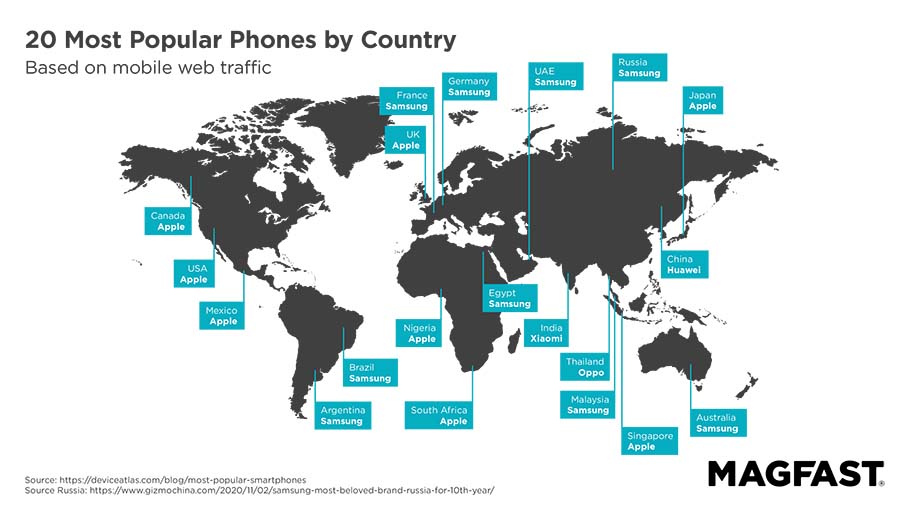
Samsung and Apple dominate the most popular phone brands by country, with nine countries preferring Samsung and eight favoring Apple. This shows the dominance these two tech powerhouses have on the market. The two corporations have been in battle since 2010, when Samsung first released its earliest Galaxy model, a smartphone that appeared to take inspiration from Apple’s iPhone. Since then, various lawsuits over patents and races to be the first, the best and the most popular have ensued.
Now, as the map shows, consumers are very nearly split down the middle. Both Samsung and Apple offer an array of smartphones, from low-end to high-end, with various features and price ranges available to suit the individual user. Which type of phone you favour will likely come down to what you are used to, with many consumers sticking to their preferred brand when it comes time to upgrade.
The map also shows how Apple and Samsung have still struggled to infiltrate certain regions. In China, it’s Huawei, the Chinese multi-national technology corporation, that dominates the phone market. In Thailand, it’s Oppo, another Chinese-owned brand, that is the most popular phone. And in India it’s Xiaomi, a Chinese tech manufacturer that has been the most-used phone brand. These regional differences could be due to marketing, preference for features, or affordability – Xiaomi is known for producing inexpensive, basic smartphones, making them available to a wider audience.
The Future of Phones
The past two decades have seen a revolution in phone technology. While some people believe we may have passed the peak of smartphone market growth, the technology we use is surely set to keep improving and developing.
The Rise of 5G
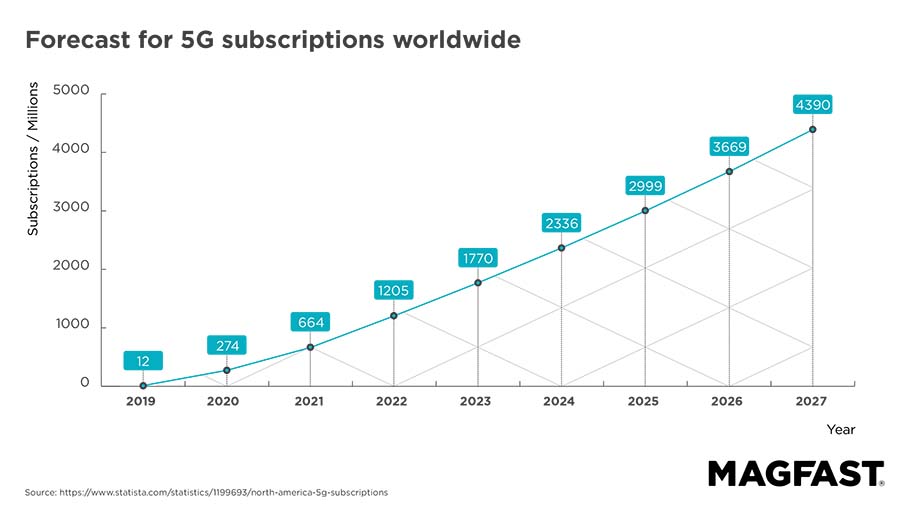
5G is now widely accessible, with numerous models that are 5G compatible on the market. In January 2020, there were 35 models available – by January 2021 that number had increased to 251.
With this availability of hardware, we have seen how the number of people with 5G subscriptions has also dramatically increased. From 2021 to 2022, the number almost doubled, from 664,000 to 1,205,000. The forecast for 5G subscriptions is only set to keep increasing, with experts predicting that there will be over 4 million 5G subscribers by 2027.
While 5G is, at the moment, seen as a new but not essential feature, it will one day become the norm across the world. In the same way that we moved from 3G to 4G in the 2000s, soon 5G will be our default network, providing faster, stronger, and more reliable connectivity and coverage.
Foldable Phones
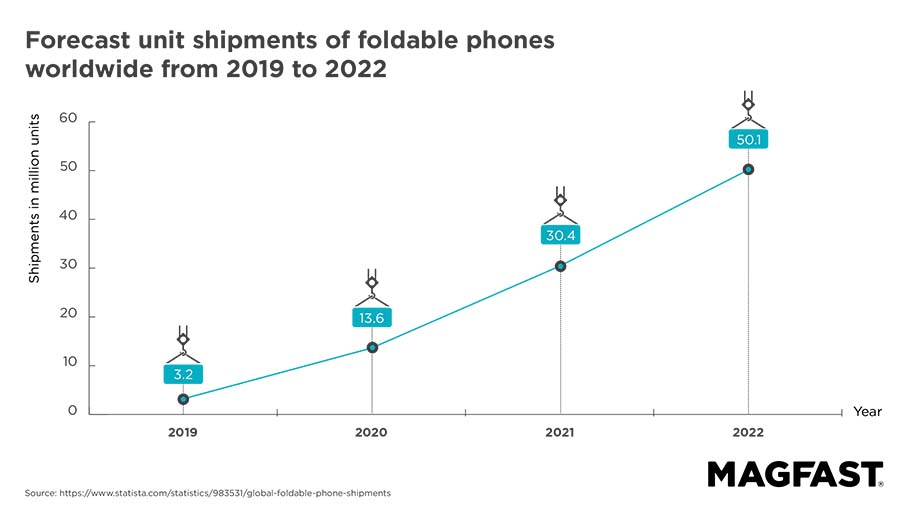
Recent developments in technology have seen the convenience of a touchscreen phone combined with the practicality of a flip phone, culminating in foldable phones. In the past three years, shipments of foldable phones have risen from 3.2 million to a huge 50.1 million.
The very first foldable phone came from Rouyu Technology and was sold only in China in 2018. Since then, Samsung has taken the reins and now leads the way in foldable phones with the Galaxy Z range.
Foldable phones are proving popular as they can offer far more screen size while keeping to a small footprint. There are versions that fold horizontally, giving you a ‘normal’ size smartphone that takes up less space in your bag or pocket, or versions that fold vertically, giving you double the screen size for the same footprint as a regular smartphone. As well as space, foldable phones include handy features to help with productivity, such as displaying a different app on each half of the screen. Thanks to the larger size, they can also carry a larger battery, offering more time between charges. They are often also more powerful, thanks to their ability to carry more RAM and more memory.
At the moment, the foldable phone is still seen by some as a novelty. However, as more people recognize the excellent features on offer, they’re sure to become mainstream for tech lovers.
What are People Looking for in Phones?
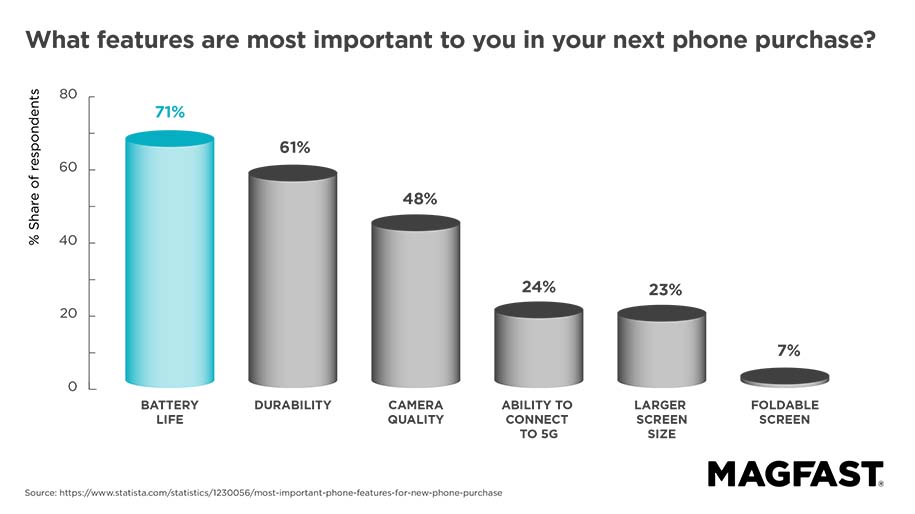
Buying a new phone can often be shaped by brand awareness, hence Apple and Samsung leading the way in sales. However, the features available are the most important – when people do swap to a competing manufacturer, it is usually because a new model can offer something that their current one does not.
In a recent survey, it was found that 71% of people said that battery life was important when looking for their next phone. This shows just how dependent we now are on our phones, and how much we require them to be usable all day, even when we’re out and about. While battery technology is always being researched and developed, we may have reached a peak of how long a smartphone battery can last. With people always looking for sleek phones, the size of the battery can’t increase. Combine this with the fact that lithium-ion batteries degrade over time, and we may have to accept that we are at capacity for battery life.
However, developments in charging technology could be our savior. At MAGFAST, we’re changing charging for good, offering a family of unique, high-performing portable chargers that have been designed for every part of your life. With our portable power banks, we can ensure your smartphone is kept charged up and running all day – which means that you don’t need to check the battery life when you’re looking for your next phone. Instead, you can concentrate on the other important features, such as durability and camera quality, so you can use a phone that works exactly as you need it to. And with MAGFAST chargers, you’ll know that your device will always be ready to use.
America's highest-rated smart phone cable ...

